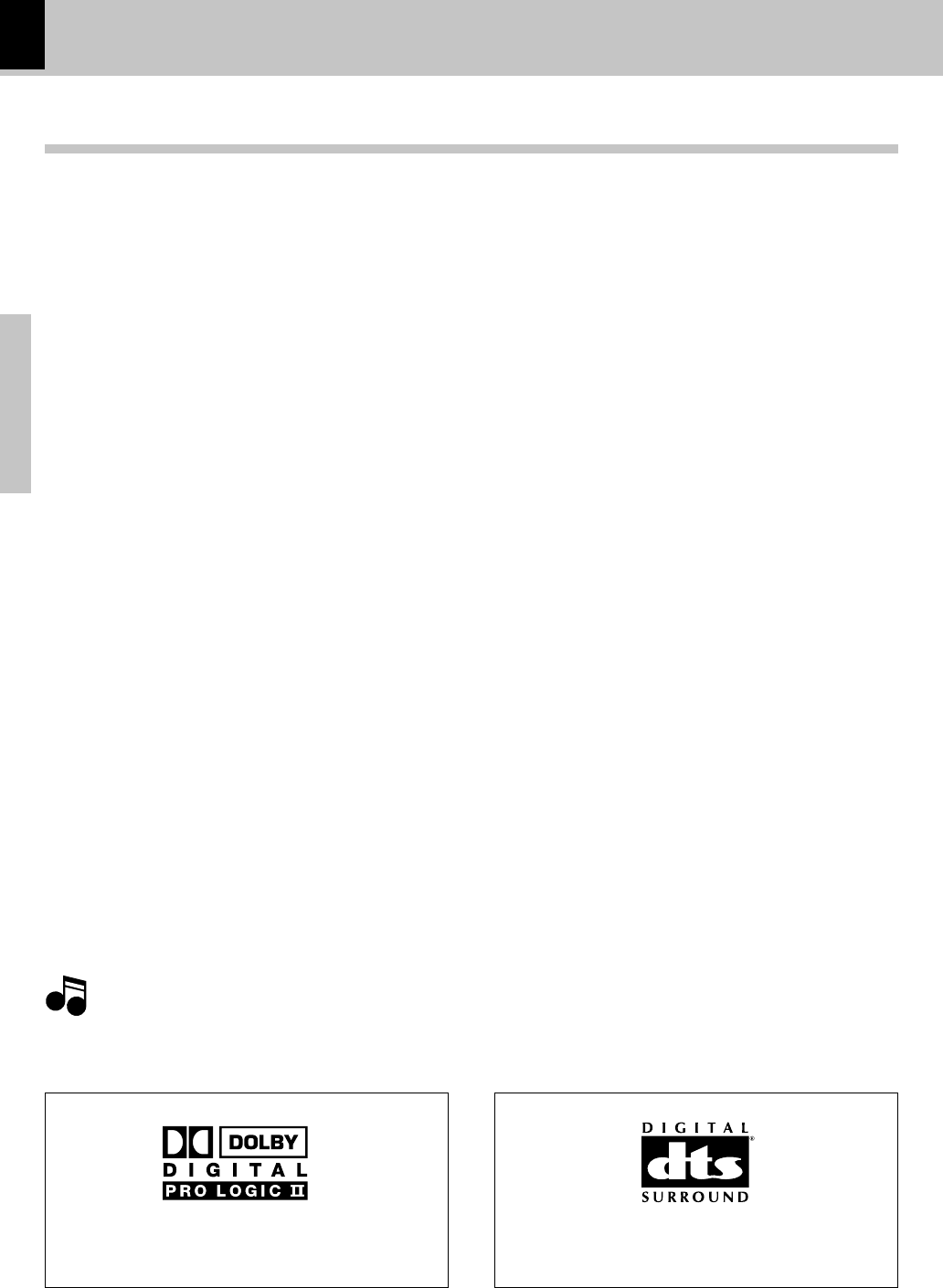
DVR-6300 (EN/K,P,E,X)
Set Up functions
20
Preparations
Notes
Notes
Setting up LISTEN mode
What are LISTEN modes?
You can experience true home-theater sound with your new system. This system incorporates several listen modes to let you
enjoy surround sound with a wide variety of program sources. Each produces multiple channels of surround-sound, but each
does it differently.
● Dolby Digital: Dolby Digital uses an encode/decode process based on its theatrical digital surround sound technology. The five
main channels are full-frequency and independent, so sound can completely envelop you or soar anywhere in the room, just
like at the movies.
Compared with Dolby Pro Logic, Dolby Digital has more clarity, greater surround envelopment, and more realistic sound
movement between channels.
● Dolby Pro Logic/Dolby Pro Logic II: Dolby Pro Logic reproduces a surround sound like in a movie theater from Dolby Surround-
encoded program source (videotape or LaserDisc software carrying the Dolby Surround logo), and features excellent sound
movement on the front and a surrounding atmosphere of movie theaters. Meanwhile, Dolby Pro Logic II decodes a signal
encoded in 2 channels into 5-channel signals composed of the left/right front signals, center signal and surround left/right signals.
Dolby Pro Logic II is an advanced version of the decoding technology used with Dolby Pro Logic. It inputs 2-channel signals from
a Dolby Surround-encoded source and reproduces 5-channel signals in which the surround channel is divided into independent
channels for the left and right. Dolby Pro Logic II has the MOVIE mode and MUSIC mode.
MOVIE mode:
The Movie mode is for use with stereo television shows and all programs encoded in Dolby Surround. The result is enhanced
soundfield directionality that approaches the quality of discrete 5.1-channel sound.
MUSIC mode:
The Music mode is for use with any stereo music recordings.
MATRIX mode:
The Matrix mode is the same as the Music mode except that the directional enhancement logic is turned off. It may be used
to enhance mono signals by making them seem “larger.” The Matrix mode may also find use in auto systems, where the
fluctuations from poor FM stereo reception can otherwise cause disturbing surround signals from a logic decoder. The
ultimate “cure” for poor FM stereo reception may be simply to force the audio to mono.
● DTS : DTS has five full-frequency channels that create effects nearly identical to those in a theater. Sounds seem to zoom from
one place to another or entirely surround you. Like Dolby Digital, DTS has much-improved clarity, surround and sound movement
capability compared with Dolby Pro Logic. This listen mode is available on CD, LD, and DVD media. DTS is a strictly digital format
that can be supplied only by a CD, LD, or DVD player that supports DTS sound.
● Stereo: Stereo listen mode provides standard stereo sound to the front left and right speakers.
● 3D Surround: To produce a 3D surround effect that simulates multi-channel audio from two stereo speakers.
● BYPASS : Software with multichannel surround audio signals is played according to the way it was recorded.
Manufactured under license from Dolby Laboratories.
“DOLBY”, the double-D symbol and “PRO LOGIC” are
trademarks of Dolby Laboratories.
“DTS” and “DTS Digital Surround” are registered trade-
marks of Digital Theater Systems, Inc.
÷ When you play sound tracks with 96kHz sampling frequency, the output signals will be converted to 48kHz
(sampling frequency).
÷ Sound Mode is not applicable when headphone is used.
*5476/20-22/EN 04.7.27, 2:05 PM20


















